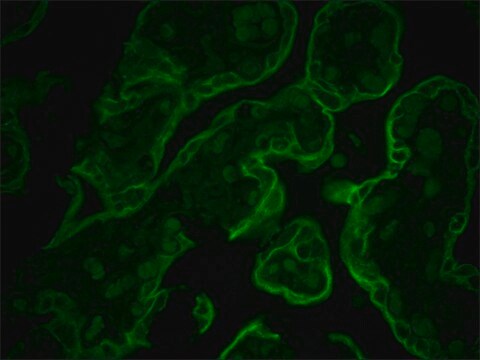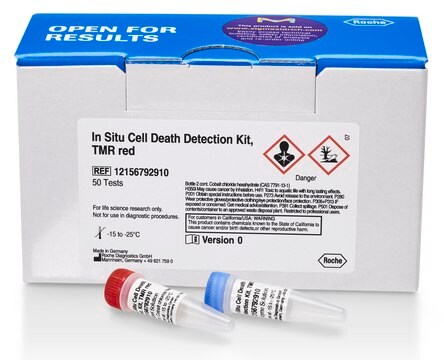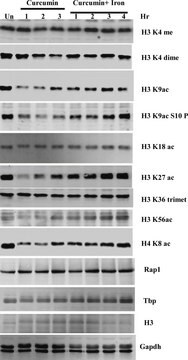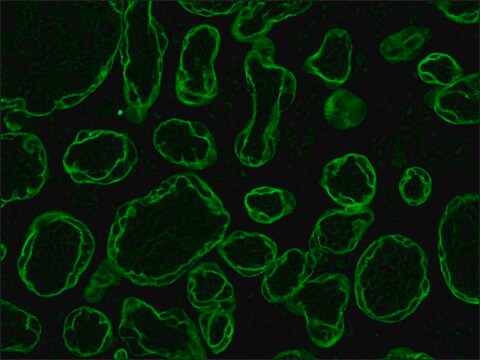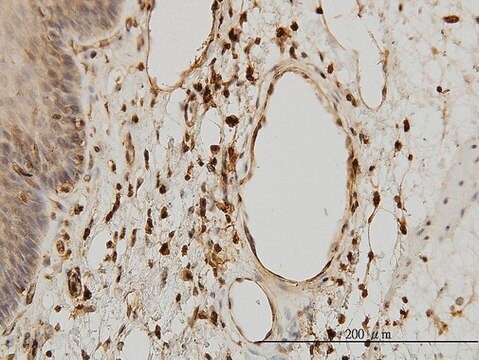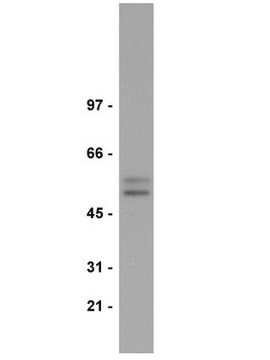SAB4200855
Anti-Cytokeratin Peptide 18 antibody, Mouse monoclonal
clone CY-90, purified from hybridoma cell culture
Sinônimo(s):
Anti-CK18
About This Item
immunohistochemistry: 10-20 μg/mL using heat-retrieved formalin-fixed, paraffin-embedded human placenta sections
Produtos recomendados
forma do anticorpo
purified from hybridoma cell culture
Nível de qualidade
tipo de produto de anticorpo
primary antibodies
clone
CY-90, monoclonal
Formulário
liquid
reatividade de espécies
human
concentração
~1 mg/mL
técnica(s)
immunoblotting: suitable
immunohistochemistry: 10-20 μg/mL using heat-retrieved formalin-fixed, paraffin-embedded human placenta sections
Isotipo
IgG1
nº de adesão UniProt
Condições de expedição
dry ice
temperatura de armazenamento
−20°C
modificação pós-traducional do alvo
unmodified
Descrição geral
Especificidade
Aplicação
Ações bioquímicas/fisiológicas
Cytokeratin 18 is a member of the type I subfamily. Cytokeratin pair 8/18 forms the IF scaffold predominantly in simple epithelia such as the liver and pancreas. They have major role in the mechanical support of the cell, protein biosynthesis, protection from apoptosis, regulation of cell cycle progression, motility and organelle transport.3
Cytokeratins over and misexpression are linked to various diseases and more than 60 different disorders (termed as keratinopathies) have been linked to inherited cytokeratin changes. Cytokeratins (such as cytokeratin 18) serve as serum markers for malignant and non-neoplastic disorders and mutation of human cytokeratin 18 has also been associated with liver diseases.7
forma física
Armazenamento e estabilidade
Exoneração de responsabilidade
Não está encontrando o produto certo?
Experimente o nosso Ferramenta de seleção de produtos.
Código de classe de armazenamento
12 - Non Combustible Liquids
Classe de risco de água (WGK)
WGK 1
Ponto de fulgor (°F)
Not applicable
Ponto de fulgor (°C)
Not applicable
Escolha uma das versões mais recentes:
Certificados de análise (COA)
Lamentamos, não temos COA para este produto disponíveis online no momento.
Se precisar de ajuda, entre em contato Atendimento ao cliente
Já possui este produto?
Encontre a documentação dos produtos que você adquiriu recentemente na biblioteca de documentos.
Nossa equipe de cientistas tem experiência em todas as áreas de pesquisa, incluindo Life Sciences, ciência de materiais, síntese química, cromatografia, química analítica e muitas outras.
Entre em contato com a assistência técnica